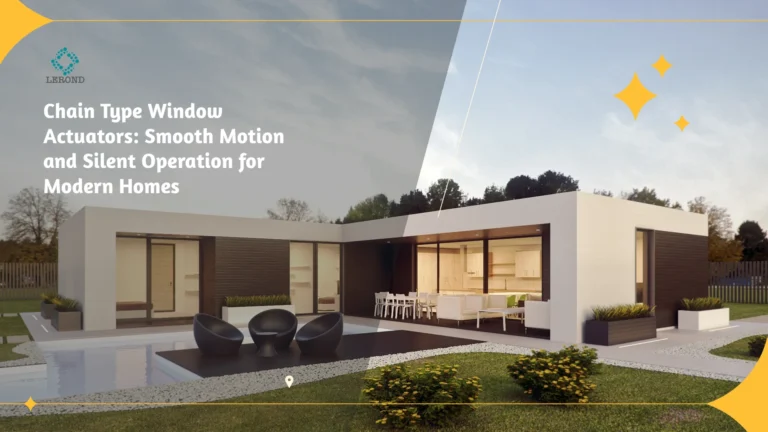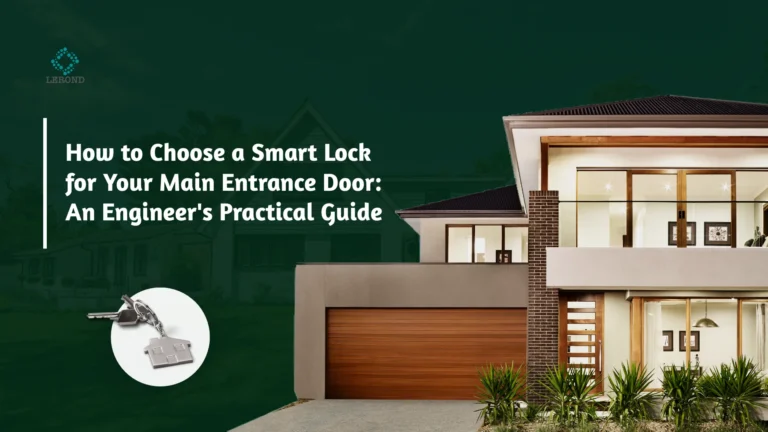In the world of smart door locks, sleek design and app functionality often steal the spotlight. But behind every smooth unlocking experience is a small, unseen hero: the motor. The motor is the heart of any electromechanical lock, responsible for driving the locking and unlocking mechanism. Yet, it’s one of the most misunderstood and under-evaluated components.
At LEROND, we believe a reliable smart lock starts with a well-engineered motor. In this article, we break down the core factors that determine motor quality, helping professionals and end-users make informed decisions.
1. Motor Type: DC vs. Stepper vs. Servo
Not all motors are created equal. The most common types used in smart locks include:
- Brushed DC Motors: Affordable, simple, but prone to wear due to brush friction. Shorter lifespan.
- Brushless DC Motors (BLDC): Higher efficiency, quieter, and more durable. Ideal for premium locks.
- Stepper Motors: Offer precise positioning but are slower and less energy-efficient.
- Servo Motors: Complex and costly, mainly used in industrial or high-security locks.
LEROND Insight: Our full-automatic locks use optimized BLDC motors to ensure long life, reduced noise, and consistent torque across thousands of operations.
2. Torque Output: Can the Motor Handle the Load?
Torque determines whether the motor can move the deadbolt smoothly, especially when the door isn’t perfectly aligned.
- Minimum Recommended Torque: For residential locks, 0.8–1.2 Nm is standard.
- Overtorque Protection: A good motor should stop or reverse if resistance exceeds normal levels—this avoids damage or battery drain.
- Consistency Across Temperatures: Motor performance should be stable from -20°C to +60°C.
LEROND Standard: Our motors are tested with a 1.5× safety load in both lab and field scenarios.
3. Speed vs. Noise Trade-Off
Fast unlocking is desirable, but too much speed can cause harsh noise and increased wear.
- Optimal Unlocking Time: 1.2 to 2.5 seconds for most residential applications.
- Deceleration Curves: High-quality motors are tuned to gradually slow down to reduce mechanical shock.
- Sound Levels: Under 55 dB during operation is considered acceptable for premium indoor locks.
LEROND Design Tip: We fine-tune motor speed and gear ratio to balance responsiveness with acoustic comfort.
4. Gearbox Quality: A Critical Companion
Even the best motor is only as good as the gearbox it’s connected to. A poor gearbox leads to noise, vibration, and short product life.
- Material Matters: Brass or POM plastic gears offer better wear resistance than cheap ABS.
- Lubrication: Proper greasing reduces friction and noise.
- Gear Ratio: Impacts torque multiplication and motion smoothness.
LEROND Engineering: Our locks use custom gearboxes designed for high meshing efficiency and minimal backlash.
5. Power Efficiency and Battery Consumption
Smart locks are often battery-powered. A high-drain motor shortens battery life significantly.
- Current Draw: Should be under 1.5A during peak load.
- Sleep Mode Efficiency: A good design cuts off standby motor current completely.
- Cycle Count per Battery Set: Quality locks offer 6–12 months of life at 10–15 operations per day.
LEROND Guarantee: With our motor-control algorithm and efficient BLDC motors, we ensure up to 10,000 unlocks per battery cycle.
6. Reliability Testing: Proving Performance Over Time
Manufacturers should test motor performance through:
- Cycle Testing: At least 100,000 lock/unlock operations.
- Temperature-Humidity Aging: Confirm motor stability under harsh conditions.
- EMC Compliance: Ensure motor doesn’t interfere with other electronics.
LEROND Protocol: Every motor model undergoes fatigue and stress testing before release.
Final Thoughts: The Motor is the Foundation of Trust
A smart lock’s intelligence means little if the motor fails. While consumers often judge locks by app features or finish, professionals know it’s what’s inside that counts.
At LEROND, we start with the motor—because reliability, longevity, and smooth performance are not negotiable. Whether you’re an OEM looking for dependable components or a homeowner seeking peace of mind, understanding the motor’s role is key to choosing the right lock.
The motor isn’t just a part—it’s the heartbeat of your smart security system. Choose wisely.




